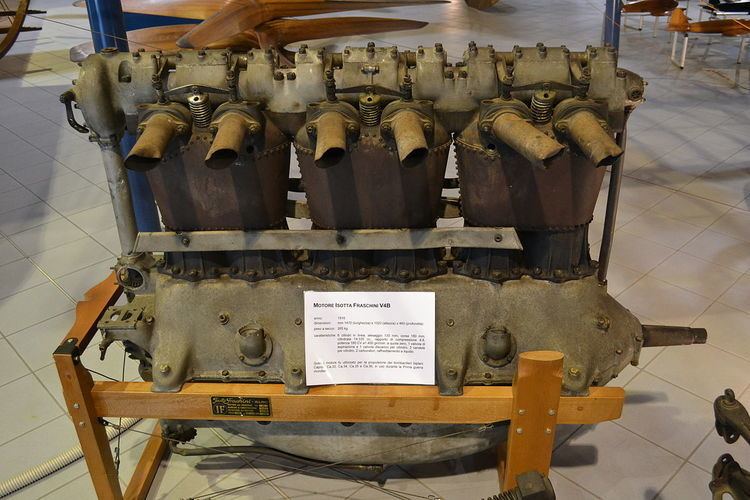 | ||
The Isotta Fraschini V.4 of 1916 was an Italian six-cylinder, water-cooled, in-line piston aero engine of World War I (the "V" denoted "Volo" or "flight"). Its construction was fairly typical of aircraft engines of the period with six cast-iron cylinders mounted in pairs with common heads. This engine was also produced by Alfa Romeo.
Contents
Applications
Engines on display
Specifications (V.4b)
Data from Jane's Fighting Aircraft of World War I (2001); Gianni Caproni Museum of Aeronautics placard description
General characteristics
Components
Performance
References
Isotta Fraschini V.4 Wikipedia(Text) CC BY-SA
